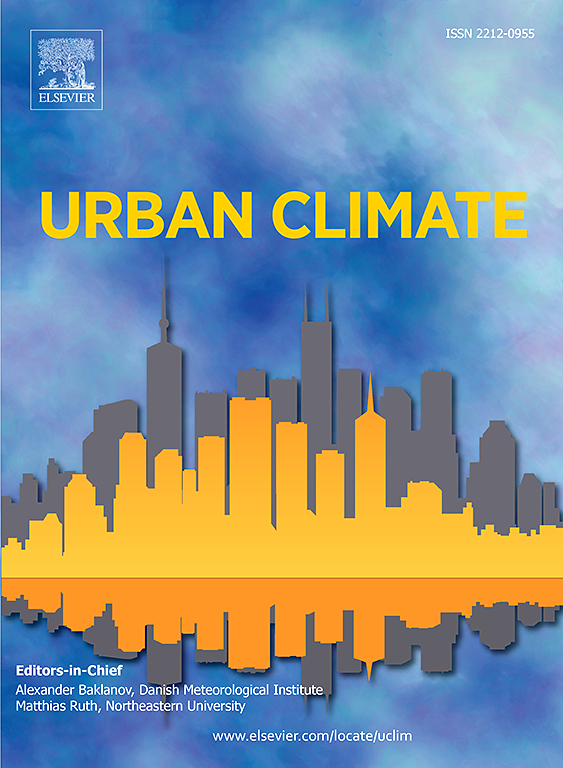Towards climate-responsive communities: Exploring the nonlinear relationship between residential morphology and land surface temperature
IF 6.9
2区 工程技术
Q1 ENVIRONMENTAL SCIENCES
引用次数: 0
Abstract
Residential morphology strongly influences urban thermal environments, especially under extreme summer heat that amplifies urban heat island effects. However, the ways morphological factors produce nonlinear impacts on land surface temperature (LST) remain less understood. Nonlinear relationships refer to disproportionate or threshold-based changes in LST in response to variations in morphological indicators. This study analyzes 857 residential areas within Beijing's Fifth Ring Road using summer LST from Landsat 9 and 14 morphological indicators derived from OpenStreetMap and AOI data. A LightGBM model combined with SHAP values quantifies indicator importance and reveals nonlinear response patterns. The findings indicate a “warmer inside, cooler outside” spatial distribution pattern of residential LST across the study area. Among residential types, LST levels rank as Enclosed > Hybrid > Row > Point group. Building construction shows the highest influence on LST, followed by scale and location, natural environment, and development intensity. Key morphological indicators include building height, green space ratio, surrounding land surface temperature, and building spacing. The analysis reveals a nonlinear relationship between residential morphology and thermal environments, with threshold effects or inflection points observed in the influence curves. By identifying these nonlinear relationships and key indicators, the study offers a scientific basis for targeted planning strategies to enhance thermal comfort and promote sustainable residential environments.
走向气候响应型社区:探索居住形态与地表温度的非线性关系
住宅形态强烈影响城市热环境,特别是在极端夏季高温下,城市热岛效应放大。然而,形态因子对地表温度产生非线性影响的机理尚不清楚。非线性关系是指地表温度随形态指标的变化而发生的不成比例的或基于阈值的变化。本研究利用夏季LST数据对北京五环内857个居民区进行了分析,LST数据来自Landsat 9,形态学指标来自OpenStreetMap和AOI数据。结合SHAP值的LightGBM模型量化了指标的重要性并揭示了非线性响应模式。研究结果表明,研究区居民地表温度呈现“内暖外冷”的空间分布格局。在住宅类型中,LST水平排名为封闭式>;混合比;行比;点群。建筑结构对地表温度的影响最大,其次是规模与区位、自然环境和开发强度。关键形态指标包括建筑高度、绿地比、周边地表温度、建筑间距。分析揭示了住宅形态与热环境之间的非线性关系,在影响曲线中观察到阈值效应或拐点。通过识别这些非线性关系和关键指标,该研究为有针对性的规划策略提供了科学依据,以提高热舒适和促进可持续的居住环境。
本文章由计算机程序翻译,如有差异,请以英文原文为准。
求助全文
约1分钟内获得全文
求助全文
来源期刊

Urban Climate
Social Sciences-Urban Studies
CiteScore
9.70
自引率
9.40%
发文量
286
期刊介绍:
Urban Climate serves the scientific and decision making communities with the publication of research on theory, science and applications relevant to understanding urban climatic conditions and change in relation to their geography and to demographic, socioeconomic, institutional, technological and environmental dynamics and global change. Targeted towards both disciplinary and interdisciplinary audiences, this journal publishes original research papers, comprehensive review articles, book reviews, and short communications on topics including, but not limited to, the following:
Urban meteorology and climate[...]
Urban environmental pollution[...]
Adaptation to global change[...]
Urban economic and social issues[...]
Research Approaches[...]
 求助内容:
求助内容: 应助结果提醒方式:
应助结果提醒方式:


